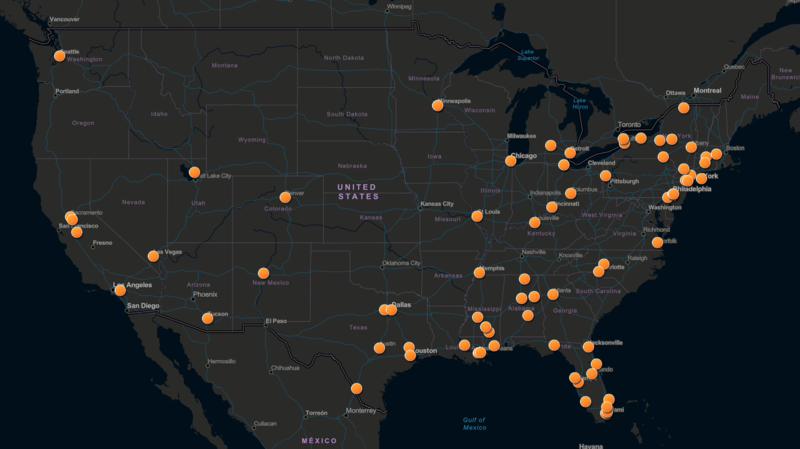EFF has published a new report, "Surveillance Compounded: Real-Time Crime Centers in the United States," which profiles seven surveillance hubs operated by local law enforcement, plus data on dozens of others scattered across the country.
Researched and written in collaboration with students at the Reynolds School of Journalism at the University of Nevada, Reno, the report focuses on the growth of real-time crime centers (RTCCs). These police facilities serve as central nodes and control rooms for a variety of surveillance technologies, including automated license plate readers, gunshots detection, and predictive policing. Perhaps the most defining characteristic of a RTCC is that a network of video cameras installed in the community that analysts watch on a wall of monitors, often in combination with sophisticated, automated analytical software.
As we write in the report:
RTCCs are similar to Fusion Centers, to the extent the terms are sometimes used interchangeably. We distinguish between the two: fusion centers are technology command centers that function on a larger regional level, are typically controlled by a state-level organization, and are formally part of the U.S. Department of Homeland Security's fusion center network. They also focus on distributing information about national security "threats," which are often broadly interpreted. RTCCs are generally focused on municipal or county level activities and focus on a general spectrum of public safety issues, from car thefts to gun crime to situational awareness at public events.
The term “real-time” is also somewhat misleading: while there is often a focus on accessing data in real-time to communicate to first responders, many law enforcement agencies use RTCC to mine historical data to make decisions about the future through "predictive policing," a controversial and largely unproven strategy to identify places where crime could occur or people who might commit crimes.
We identified more than 80 RTCCs in the U.S. in 29 states, with the largest number concentrated in New York and Florida. The report includes case studies of RTCCs in: Albuquerque, NM; Atlanta, GA; Detroit, MI; Miami Gardens, FLA; New Orleans, LA; Ogden, UT; and Sacramento,CA. We have also included a profile of the Fresno Real-Time Crime Center, which was suspended prior to publication of our report.
These profiles break down the costs, what technology is installed in neighborhoods, and what type of equipment and software is accessible by RTCC staff.
We also document controversies that have arisen in response to the creation of these RTCCs.

"Surveillance Compounded" is part of the Atlas of Surveillance project, an ongoing collaboration with the Reynolds School of Journalism that aims to build a central database and map of police technologies using open source intelligence.
This is the second such report, following 2019 "Atlas of Surveillance: Southwestern Border Communities," which documented surveillance technology in the 23 U.S. counties that border Mexico.
As of November 15, 2020, the Atlas contains more than 6,100 data points related to automated license plate readers, drones, body-worn cameras, cell-site simulators, and other law enforcement technologies.
Visit the Atlas of Surveillance.




No comments:
Post a Comment